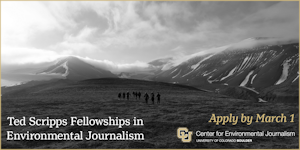Why the 2023 Farm Bill Will Actually Be an Environmental Story — and a Huge One

A massive farm bill soon to emerge for debate in Congress will have enormous implications for the environment beat, affecting natural resources, environmental health and climate, not to mention food production and public health. Backgrounder lays out some of the key issues expected to be taken up in the twice-a-decade measure and provides resources for ongoing coverage.






















 Advertisement
Advertisement 




